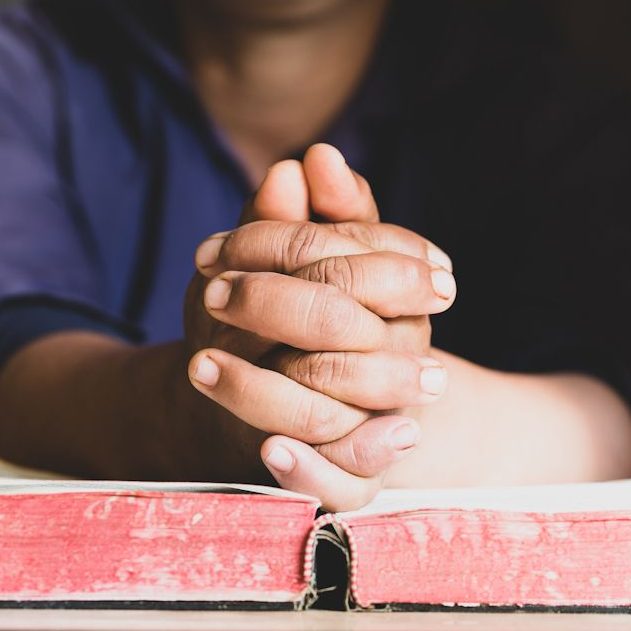Joe Iovino asserts that there is no one-size-fits-all technique for prayer. “Each of us needs to find our unique style.” Pray in a variety of ways during Lent.
JOE IOVINO
United Methodist Communications
“Lord, teach us to pray,” the disciples request of Jesus (Luke 11:1 CEB). Many of us who lack confidence in our prayer lives ask the same of our pastors and others who seem to have a better handle on that spiritual discipline.
As United Methodists, we know the value of works of piety like prayer. The third of John Wesley’s three rules for the Methodist Church was to continue “attending upon all the ordinances of God.” The list of examples he offered with this rule included “Family and private prayer.”
Learning to pray is like learning to ride a bicycle. What we can learn from a book or class is not enough. Proficiency comes through practice.
Additionally, because prayer is a form of communication, there is no one-size-fits-all technique. Each of us needs to find our unique style.
Spending a day or season invigorating your prayer life is time well spent. Experiment with some new-to-you ways of praying. You might be surprised to find what works best for you.
Be still
You don’t necessarily need words to pray. In Psalm 46 God tells his people who were busy trying to please him, “That’s enough! Now know that I am God!” (Psalm 46:10 CEB). Sometimes we need to stop performing for God and simply “be still.”
This can be hard at first because it is so unfamiliar. Set a timer for 3-5 minutes, or find some relaxing music or sound effects that will mark the time. Then be quiet and rest in the presence of God.
Breath Prayer
Breath prayers are another way to become more aware of God’s presence. The Holy Spirit is as near as the air we breathe.
A common way to practice breath prayer is silently repeating a single-line prayer with each breath. As you inhale address God with something like, “Jesus, Son of God.” Then, as you exhale, express a request to God such as, “be merciful to me, a sinner.” Other examples are, “Creator God, allow me to see your beauty around me,” “Holy Spirit, let me feel your joy,” “O Lord, show me your way,” and “Holy One, heal me.” Repeat the prayer with each breath for several minutes. Listen for God.
Multi-sensory Prayer
Engaging other senses in prayer proves effective for many. Through the centuries, Christians have looked at candles, smelled incense, and held onto beads, crosses, and more as they prayed.
A creative way to do something similar is to pray while working a piece of clay in your hands and contemplating your humanity and sinfulness. The clay reminds us that God is constantly shaping us into vessels of the Holy Spirit. As Jeremiah watched a potter shape and reshape clay, he heard the voice of God, “Like clay in the potter’s hand, so are you in mine” (Jeremiah 18:6 CEB).
Labyrinth Prayer
A labyrinth is another helpful tool for focusing prayers. A labyrinth is a path marked out in a field, painted in a parking lot, or shown on a carpet that you walk while you pray.
While a labyrinth may look like a maze, it is not. It is a single path leading participants into the center, and back out.
While entering the labyrinth, prayers are focused on confession. Participants then pause in the center to read scripture, sing, or worship another way. On the way out of the labyrinth prayers for others, self, and anything else that occupies the mind are offered.
Since labyrinths are not readily available, a finger labyrinth makes a great substitute. You can pray this three-part prayer while slowly tracing the path with your finger.
Or, if you would rather walk, pray similarly while strolling around your neighborhood or on a nearby hiking trail.
Praying scripture
Another great source of prayer is the Bible. Praying the scriptures has a long tradition among the faithful.
Prayerfully read a passage by stopping every line or so, and praying what comes to mind. This can stretch us to bring before God petitions we might not think of on our own.
Praying the Psalms, for example, calls us to address every emotion. Praying Mary’s Magnificat (Luke 1:46-55) will lead us in prayer for the poor and oppressed. Many scriptures such as Jesus’ healings and parables, Paul’s letters, and others, may deeply speak to our needs, help us to praise, or remind us of a promise of God.
Pray by checking in with God
You may also pray by simply checking in with God at the end of the day. As you might call a friend or family member just to chat about what is going on in your life, you can have the same conversation with God.
Ignatius of Loyola, a 16th century cleric and theologian, taught what he called the Daily Examen. The Examen asks the believer to share with God that for which you are thankful, moments you recognized God’s presence in the events of the day, your shortcomings, and to ask God to prepare you for the day ahead.
Find your way
As there are many ways to communicate with those closest to us, so too there are numerous ways to pray. This list is not comprehensive, but rather a place to begin exploring prayer methods.
Spend some time developing a richer prayer life by
Last Updated on November 1, 2022

